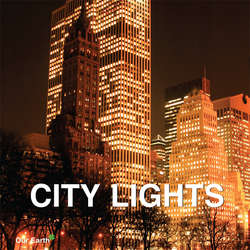Читать книгу City Lights - Victoria Charles - Страница 3
На сайте Литреса книга снята с продажи.
Introduction
ОглавлениеAlthough the deliberate harnessing of light began in ancient times, as demonstrated by countless remnants of torches or other oil lamps found at historic sites, public lighting long remained essentially non-existent, except during feasts and festivals. It was not until the 15th century that people began to hang lights in their homes; however, maintenance of such lamps was the responsibility of the home-owner, and any neglect on his part would plunge the narrow streets into darkness. At this time, the candles that filled the lanterns gave off but little light, so when the first streetlamps with reflective mirrors were installed in 1771, the improved illumination was remarkable. In 1785, Swiss physicist Aimé Argand perfected a lamp, known as the Argand lamp, which improved the quality of lighting that had formerly been weak and irregular.
While the oil lamp continued to undergo enhancements with various inventions, particularly those of Antoine-Arnault Quinquet and Ambroise Bonnaventure Lange, gas lighting was experiencing its beginnings in Europe in the early 19th century (China had already been using it for a long time), thanks to the discovery in 1792 of a method for distilling coal by Scottish engineer William Murdoch and French inventor Jean-Pierre Minckelers.
The kerosene lamp enjoyed immense success in the 1860s as a result of numerous oilfields in the United States. However the spreading use of electricity, which had been encouraged by the experiments and discoveries of Humphry Davy in England and Léon Foucault in France, but most particularly those of Russia’s Paul Jablochkoff, an engineer who invented an electric candle in the late 1870s, signified a veritable revolution. In 1879, Thomas Edison finalised an incandescent lamp that found its way to Europe in 1882. That same year, Edison invented the first electric telephone exchange, which ran an electric current throughout Wall Street, confirming his status as the founding father of modern electricity.
If public lighting originally permitted people to orient themselves first and foremost, its most valued quality, perhaps, was its related role in promoting public security by casting light on shadowed, disturbing streets.
In addition to serving as a reliable public utility, urban lighting offered new liberty to populations, who no longer had to set their life’s rhythms according to the sun’s movements. From this point on, a nocturnal social life flourished and numerous nighttime entertainment venues began to emerge.
Today, light is no longer restricted to purely utilitarian service. Not only is it used as an essential element in billboard advertisements – notable examples include the massive, lighted ads of Picadilly Circus, Broadway or Times Square – but in connection with architecture, illumination can become a veritable artistic medium. Many cities now organise sound and light shows, where engineers and designers try to outdo each other in terms of inventiveness to produce dazzling spectacles. Bridges, skyscrapers and other monuments are now liberated from cold and the night sky, rising draped in light as powerful celebrations of electricity.
